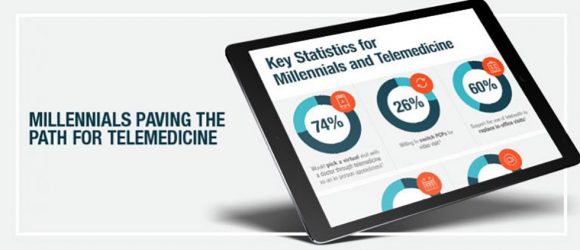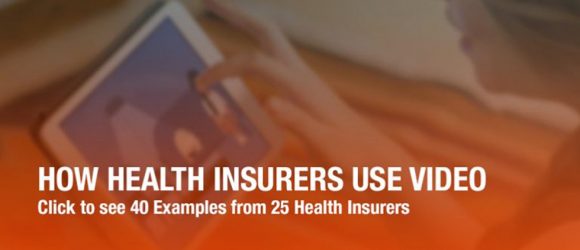3 Native Advertising Strategies for Healthcare Marketers

Business Insider is projecting that native advertising will drive 74 percent of all display ad revenue by 2021. If you’re like many healthcare marketers, that number may have you asking “How can that be possible?” To get some answers, let’s take a look at the obstacles and opportunities behind the rapid uptick of this digital trend, and see if the better question to ask is “How do I get on board?”
In the English Oxford Dictionary, native is defined as “a local inhabitant.” In a marketing context, native advertising is sponsored content placed on carefully chosen platforms, intended to reach a chosen audience in a way that seamlessly weaves into their social and content feeds without interrupting their experience, creating a home for itself — in essence, becoming “a local inhabitant.” Native ads fit into a couple different categories in the digital world: in-feed ads on social platforms, in-feed ads on publisher websites and sponsored content, which looks much like traditional editorial. According to Business Insider, native display ads will dominate ad revenue, but sponsored content will be the fastest-growing native format.
Sounds good so far, but what about consumers’ perceptions of native advertising? With more and more sponsored content resembling traditional editorial, could consumers feel tricked by the tactic and could that negatively affect brand perception? Marketers’ worries are not unsubstantiated. In a recent study 54 percent of respondents report feeling deceived by native advertising in the past. However, given publishers reliance on native advertising revenue and their desire to grow the channel, steps are being taken to correct this. In another study, 64 percent of consumers said native needs to be clearly labeled, and publishers are responding by using the label “sponsored” for ads and content on their sites.
But to fully understand the opportunity of native advertising, healthcare marketers need to look at what’s driving the success of native — particularly sponsored content. There is no doubt that the way that consumers shop for products and services has changed dramatically. Inc. reports that 70 percent of consumers want to learn about products through content as opposed to traditional ads. Native advertising offers marketers an opportunity to give consumers the information they need, in the right environment, without interrupting their experience, making it much more likely that they will be receptive to the message. Unlike traditional display ads that are disruptive and salesy, native ads provide meaningful and relevant information, while inviting and enticing the consumer to find out more. The “more” can be an invite to attend a Medicare seminar, to visit your bariatric site or to take a virtual tour of a facility. Because this is an ad, advertisers can include a “pitch”, but content should be informational first and foremost.
There are a number of ways for health insurers to utilize native advertising as a marketing tactic. For example, native ads are a natural fit for Medicare marketers looking to establish their brands as thought leaders and keep brand names top of mind all year long. Consumers who are new to Medicare are naturally looking for more information on the topic and native advertising is a smart approach for delivering that information. Editorial native advertising options present ample real estate for insurers to introduce and explain complex products, such as Medicare plans, to a targeted audience. Branded native advertising is more than just a promotional tool, but rather an effective and informative way to share high quality content that can significantly benefit consumers.
As healthcare marketers contemplate the opportunities, here are three strategies to keep in mind when using native content advertising:
- Find the right publisher. In order for native content to be effective it must “inhabit” the right space. For marketers, that means reaching your target audience on the platforms where they are consuming the content of their choice. This will likely require research to identify the best places and discussion with the publisher to make it happen. At this point, not all publishers offer native advertising, so be willing to approach them with ideas. Some may even need to be sold on the opportunity. Keep in mind, you are offering relevant, informative content that their readers will value. It can be a win-win situation.
- Create content with your target audience in mind. Share knowledge and expertise about a topic that’s important and relevant to them – 62 percent of consumers consider this to be essential. Your goal is to inform and by doing so build confidence and trust in your brand, and anything that is too promotional is likely to be dismissed. Keep in mind that your content also has to fit within the editorial guidelines of the publication. Your content can’t interrupt the editorial experience for the reader. Work with the publisher to determine the topic that best fits the interest of their audience and your needs as an advertiser. Some publishers may offer (or even require!) to have their team write your content so that it fits in with the rest of the content. If that is a direction you take, be sure it represents your brand voice and values.
- Be authentic. Considering that over half of consumers have felt deceived by native advertising in the past, ensure that your approach and purposes are clear, and get on board with your content being labeled as “sponsored”. Consumers will be much more receptive if they trust your approach.
Successful native advertisement takes time, energy and well-crafted content. However, given the opportunity that exists for healthcare marketers to have the opportunity to reach target audiences on the websites, social platforms and newsletters that they read most in an informative and engaging way, it’s often well worth the effort. Talk to us today about how we can help out with your native advertising needs.









